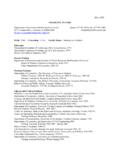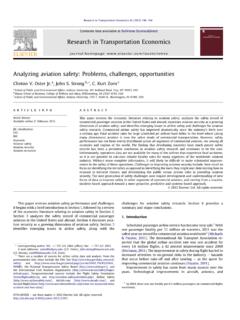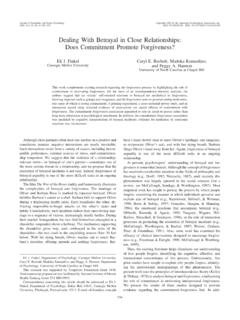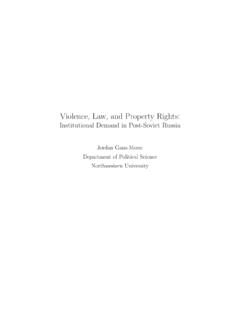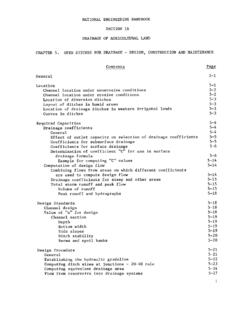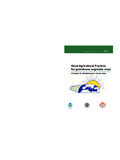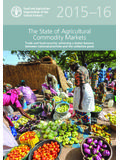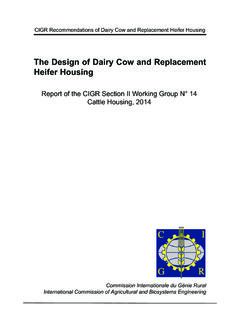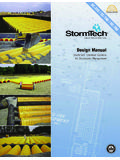Transcription of Do Household Definitions Matter in Survey Design? …
1 1 Do Household Definitions Matter in Survey design ? Results from a Randomized Survey Experiment in Mali Lori Beaman* Northwestern University Andrew Dillon International Food Policy Research Institute June 2011 Abstract Household Definitions used in multi-topic Household surveys vary between surveys but have potentially significant implications for Household composition, production, and poverty statistics. Standard Definitions of the Household usually include some intersection of keywords relating to residency requirements, common food consumption, and intermingling of income or production decisions. Despite best practices intending to standardize the definition of the Household , it is unclear which types of Definitions or which intersections of keywords in a definition result in different Household compositions.
2 This paper conducts a randomized Survey experiment of four different Household Definitions in Mali to examine the implications for Household -level statistics. This approach permits analysis of the trade-offs between alternative definition types. We find that additional keywords in Definitions increase rather than decreases Household size and significantly alters Household composition. Definitions emphasizing common consumption or joint production increase estimates of the levels of Household assets and consumption statistics, but not on per adult equivalency asset and consumption statistics, relative to open-ended Definitions of the Household . In contrast, definition type did not affect production statistics in levels, though we observe significant differences in per adult equivalency terms.
3 Our findings suggest that variations in Household definition have implications for measuring Household welfare and production. Keywords: Household definition, randomized experiment, assets, consumption JEL codes: C81, C93, J12 * Department of Economics, Northwestern University. Email: International Food Policy Research Institute. Email: Acknowledgments Funding from the Millennium Challenge Corporation (MCC) is gratefully acknowledged, along with the helpful assistance of Madeleine Gauthier and Annette Richter. Nouhoum Traore and Aissatou Ouedraogo provided excellent research assistance. We thank the editors, Kathleen Beegle, Kristen Himelein, three anonymous referees, seminar participants at IFPRI, and conference participants at the Survey design and Measurement Conference sponsored by the Enterprise Institute, Yale University, and the World Bank for insightful comments.
4 These findings do not reflect the position or opinions of MCC. All errors are our own. 2 1. Introduction Household Definitions used in multitopic Household surveys vary between surveys, but have potentially significant implications for Household composition as well as statistics generated for Household units. Standard Definitions of the Household usually include some intersection of keywords relating to residency requirements, common food consumption, and common intermingling of income or production decisions. Many explicitly require that the listing of persons cited as Household members acknowledge a common Household head. Despite best practices to standardize the definition of the Household , it is unclear which types of Definitions or which intersections of keywords in a definition result in differences in Household composition or size.
5 More problematic, the reported Household listing may not capture the relevant economic unit, and that could bias Household statistics such as consumption aggregates, assets, or Household production. Although different Household Definitions may be used to address different economic units of interest, it is unclear whether comparing results from surveys using different Definitions would affect empirical analysis. Further comparisons within countries over time or across countries may be biased if alternative Household Definitions were used when collecting the data. The existence or extent of biases is difficult to assess, however, as there is no rigorous evidence on how sensitive Household statistics are to the chosen definition. We investigate this question using a Survey experiment in rural Mali where four recent national surveys used four different Household Definitions , resulting in varying reported Household sizes from to Most households in rural Mali, like in many developing country contexts, depend on subsistence agriculture, and households live in close proximity to extended family members in shared family compounds.
6 Given the rather complex structure of Household arrangements in Mali, it is an excellent setting to examine whether measures of Household structure, assets, food consumption and agricultural production are sensitive to the definition of the Household used in a standard Household Survey . The problem of correctly classifying individuals into Household units is a problem that may be particularly acute in societies where extended families cohabitate together in shared family compounds. The paper conducts a randomized Survey experiment of four different Household Definitions to examine the implications for Household statistics. This approach permits analysis of the trade-3 offs between alternative definition We chose to vary definition types by adding or removing specific conditions or keywords commonly used in the Household definition to test the effect of those requirements on Household composition and statistics.
7 The first definition requires only that members of the Household live in the same dwelling space and acknowledge a common Household head. The second includes the criteria of the first definition but adds the criterion that households eat commonly prepared food together. The third definition includes the criteria from the first definition and adds the stipulation that members must work together on at least one agricultural plot or in one revenue-generating activity. The fourth definition combines the eating and production requirements of the second and third Definitions with the criteria from the first definition. We find that different Household Definitions have significant implications for Household composition as well as for assets and consumption statistics. In particular, Household size changes when common income generating and production keywords (definition 3) are added to the open-ended definition (definition 1).
8 We also find variation in Household composition even among definition types that have no effect on total Household size. Each of the Definitions 2, 3, and 4 leads to more adults (aged 16-60) reported within the Household , relative to definition 1. In particular, the number of married brothers and married sons within the Household also varies by Household definition. This suggests that how nuclear conjugal units are combined into a Household is sensitive to the formulation of the Household These changes in Household size and structure have consequences on Household statistics, especially those statistics that are paramount to the measurement of Household welfare. Household asset holdings are higher in definition 3 households: on average such households have of a standard deviation more of common agricultural items, of a standard deviation 1 Fundamentally, we do not know what the true Household size is when comparing alternative Definitions , or whether in extended cohabitating families, members can be assigned into true households, since the criteria of economic production and mutual production of public goods that define an economic Household become blurred.
9 2 Another important question is whether everyone in the village is counted under each definition that is, whether a change in the definition of the Household just re-allocates individuals into different households or whether some Definitions leave out individuals altogether. Since the Survey experiment randomized the definition at the Household level and there are no reliable population figures for these villages, it is challenging for us to directly address this question. We provide some suggestive evidence below that in the majority of households in the sample, additional keywords in Definitions are likely leading to the inclusion of omitted persons, rather than double counting below. 4 of additional animals, and of a standard deviation more of non-farm Household durable goods. Households asked to use the common consumption definition (definition 2) also report more livestock holdings.
10 However, there is little evidence that per adult equivalency measures of assets vary by Household definition. An emphasis on common food consumption in definition 2 leads to reports of higher consumption of grains in the last seven days. These patterns are largely consistent with an increase in Household size and the change in the composition of the Household altering measured assets, livestock and consumption figures. We do not observe differences across the Definitions for the levels of agricultural production and inputs, but do note that production statistics measured in per adult equivalents differ significantly for definition 4 relative to definition 1. The fact that per adult equivalency measures are sensitive to Household definition for some outcomes of interest suggests that both changes in Household size and composition drive differences across the consumption, asset and production modules and that respondents do not scale their responses uniformly across the different modules.


